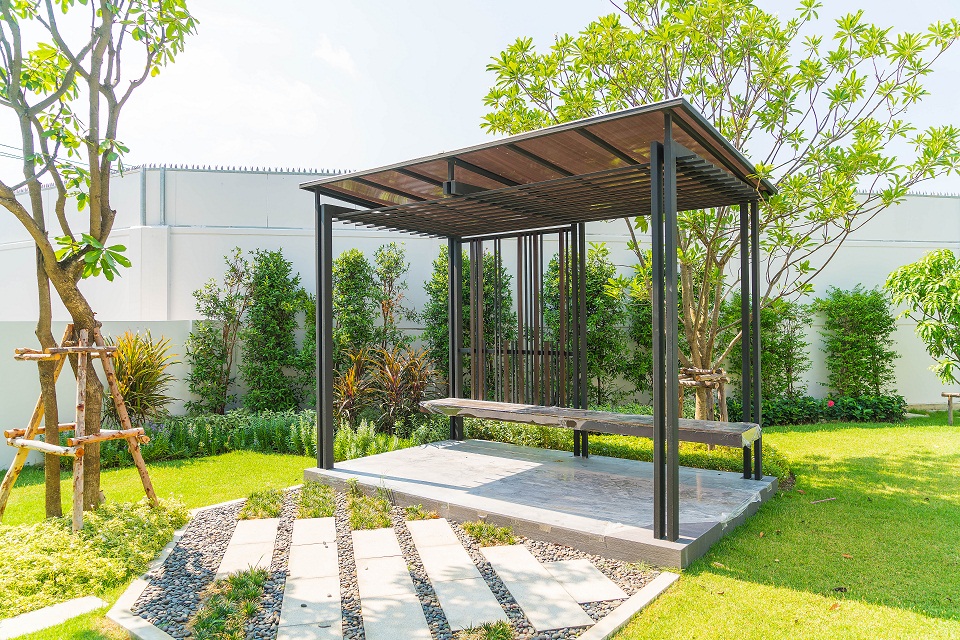Before constructing your pergola, you must ensure that the structure is strong enough to support the weight of different climbers. Climbing plants and vines are great for a pergola as they provide a natural shade. The best plants are the ones that grow rapidly, with minimal care and suitable for the growing region. Consider the area where you live to figure out the growing conditions of your climbers. Some of the popular pergolas-climbing plants are:
- WISTERIA.
These are climbers with long, dense purple and lilac pendant flowers. They bloom in the spring and are heavily scented. They require little maintenance to keep them looking their best and require a lot of sunlight for them to thrive. However, they lose their leaves in winter, allowing the warming sun to come through.
- CLEMATIS.
Clematis climbs using twisting leaf stems, which are exceptionally long, and they start looking for support as soon as they have any strength. They flower aggressively to provide a beautiful burst of colours in early spring ranging from blue, pink, purple and white. You should prune the clematis plant regularly otherwise you will end up with a tangle of bare branches.
- PASSION FLOWER.
This is an exotic climber with purple and white flowers that are quick to grow and cover the garden structure. It is an evergreen climber with exotic looking flowers, sometimes followed by brightly coloured fruits. The passionflower is suited to a sunny sheltered spot with some shade.
- CLIMBING ROSES.
These plants can grow up to twelve feet long which makes them suitable for vertical growth. They do well in full sun conditions and well-drained soils. Climbing roses come in a variety of colours, so they are sure to make your pergola look stunning. They are available in different colours, including White and Red.
- HONEYSUCKLE.
These are plants that produce tubular sweet-scented flowers full of nectar. The flowers can bloom in bright pinks, oranges, yellows or whites and tend to attract all kinds of insects and birds like bees and hummingbirds. They are simple to grow climbers that bloom mostly in sunlight and just slightly shaded roots.
- JASMINE.
Jasmines are evergreen climbers with twining stems. All jasmines have small star-shaped flowers with a distinctive fragrance. They can be summer or winter flowering, with flowers that are white, yellow and occasionally red and pink. Plant jasmine somewhere in sunny, warm and humid climates.
- MORNING GLORY.
This plant has large, showy, velvet and blue like flowers. Morning-glory is an annual climbing plant which needs a sheltered warm spot and is very sensitive to the cold. It can grow up to fifteen feet, and they grow well in full sun and relatively dry soil. They are vigorous and grow well twinning through other plants.
- BOSTON IVY.
Boston Ivy is a true climber, attaching to pergolas using its aerial roots. This is a climbing plant that provides a lot of shade and is known to change colour shades with the seasons. It is grown in both full and partial sun and well-drained soils.
Conclusion
While planting your pergola, you have to understand that some plants are natural climbers and will therefore support themselves on an object and find their way to grow around it. Other climbers, on the other hand, require help with the climbing process. This is done by tying your climber plant to the pergola or a trellis until they get started with their climbing journey.

